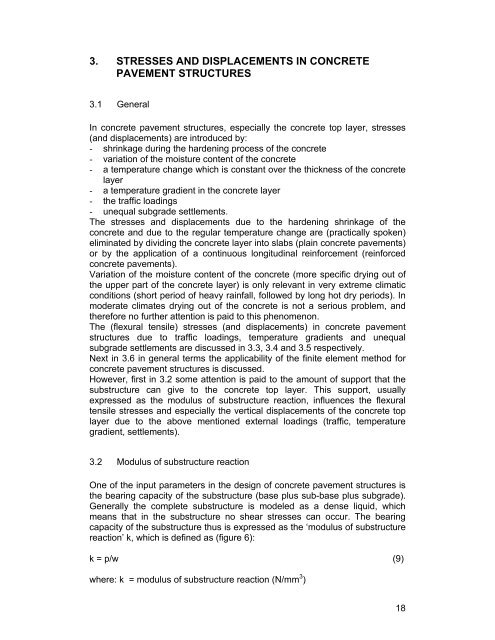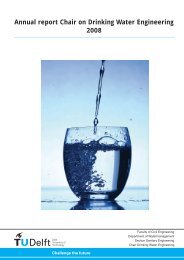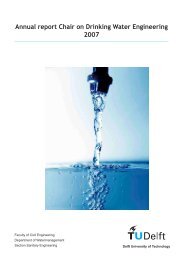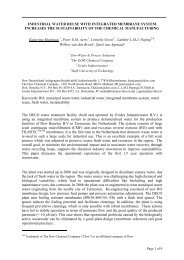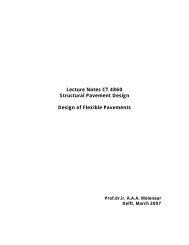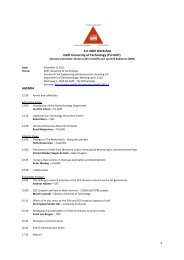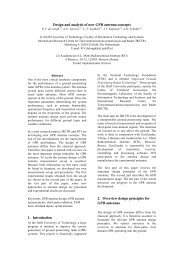CT4860 STRUCTURAL DESIGN OF PAVEMENTS
CT4860 STRUCTURAL DESIGN OF PAVEMENTS
CT4860 STRUCTURAL DESIGN OF PAVEMENTS
Create successful ePaper yourself
Turn your PDF publications into a flip-book with our unique Google optimized e-Paper software.
3. STRESSES AND DISPLACEMENTS IN CONCRETE<br />
PAVEMENT STRUCTURES<br />
3.1 General<br />
In concrete pavement structures, especially the concrete top layer, stresses<br />
(and displacements) are introduced by:<br />
- shrinkage during the hardening process of the concrete<br />
- variation of the moisture content of the concrete<br />
- a temperature change which is constant over the thickness of the concrete<br />
layer<br />
- a temperature gradient in the concrete layer<br />
- the traffic loadings<br />
- unequal subgrade settlements.<br />
The stresses and displacements due to the hardening shrinkage of the<br />
concrete and due to the regular temperature change are (practically spoken)<br />
eliminated by dividing the concrete layer into slabs (plain concrete pavements)<br />
or by the application of a continuous longitudinal reinforcement (reinforced<br />
concrete pavements).<br />
Variation of the moisture content of the concrete (more specific drying out of<br />
the upper part of the concrete layer) is only relevant in very extreme climatic<br />
conditions (short period of heavy rainfall, followed by long hot dry periods). In<br />
moderate climates drying out of the concrete is not a serious problem, and<br />
therefore no further attention is paid to this phenomenon.<br />
The (flexural tensile) stresses (and displacements) in concrete pavement<br />
structures due to traffic loadings, temperature gradients and unequal<br />
subgrade settlements are discussed in 3.3, 3.4 and 3.5 respectively.<br />
Next in 3.6 in general terms the applicability of the finite element method for<br />
concrete pavement structures is discussed.<br />
However, first in 3.2 some attention is paid to the amount of support that the<br />
substructure can give to the concrete top layer. This support, usually<br />
expressed as the modulus of substructure reaction, influences the flexural<br />
tensile stresses and especially the vertical displacements of the concrete top<br />
layer due to the above mentioned external loadings (traffic, temperature<br />
gradient, settlements).<br />
3.2 Modulus of substructure reaction<br />
One of the input parameters in the design of concrete pavement structures is<br />
the bearing capacity of the substructure (base plus sub-base plus subgrade).<br />
Generally the complete substructure is modeled as a dense liquid, which<br />
means that in the substructure no shear stresses can occur. The bearing<br />
capacity of the substructure thus is expressed as the ‘modulus of substructure<br />
reaction’ k, which is defined as (figure 6):<br />
k = p/w (9)<br />
where: k = modulus of substructure reaction (N/mm 3 )<br />
18


